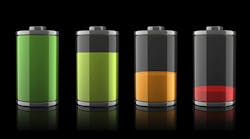Capable of charging products up to 75% faster than other technologies, Qualcomm’s Quick Charge 2.0’s ecosystem is now looking to expand into NTT DOCOMO’s mobile solutions. Quick Charge 2.0, with up to 60-W output, extends charging capabilities for smartphones and tablets to larger computing devices, such as slim notebooks.
Quick Charge 2.0 resides in both the device—as a standalone integrated-circuit (IC) solution or as part of a processor’s power-management IC (PMIC)—and in the ac/dc wall charger to enable true universal charging. It features automatic input-voltage detection (AIVD) and a high-voltage dedicated charging port (HVDCP). It’s also fully USB-interoperable with backward-compatibility for charging 6 V, 9 V, 12 V, and beyond. Qualcomm Snapdragon 800, 600, and 400 processors currently support Quick Charge 2.0.
The switch-mode operation of Quick Charge’s “TurboCharge” feature maximizes the charge current to the battery. Automatic power source detection (APSD) and automatic input current limit (AICL) also help optimize input current range. Further, automatic float voltage control (AFVC) helps reduce charging time by shortening the taper charging phase. A zero dropout battery field-effect transistor (FET) reduces parasitic losses and improves efficiency.
